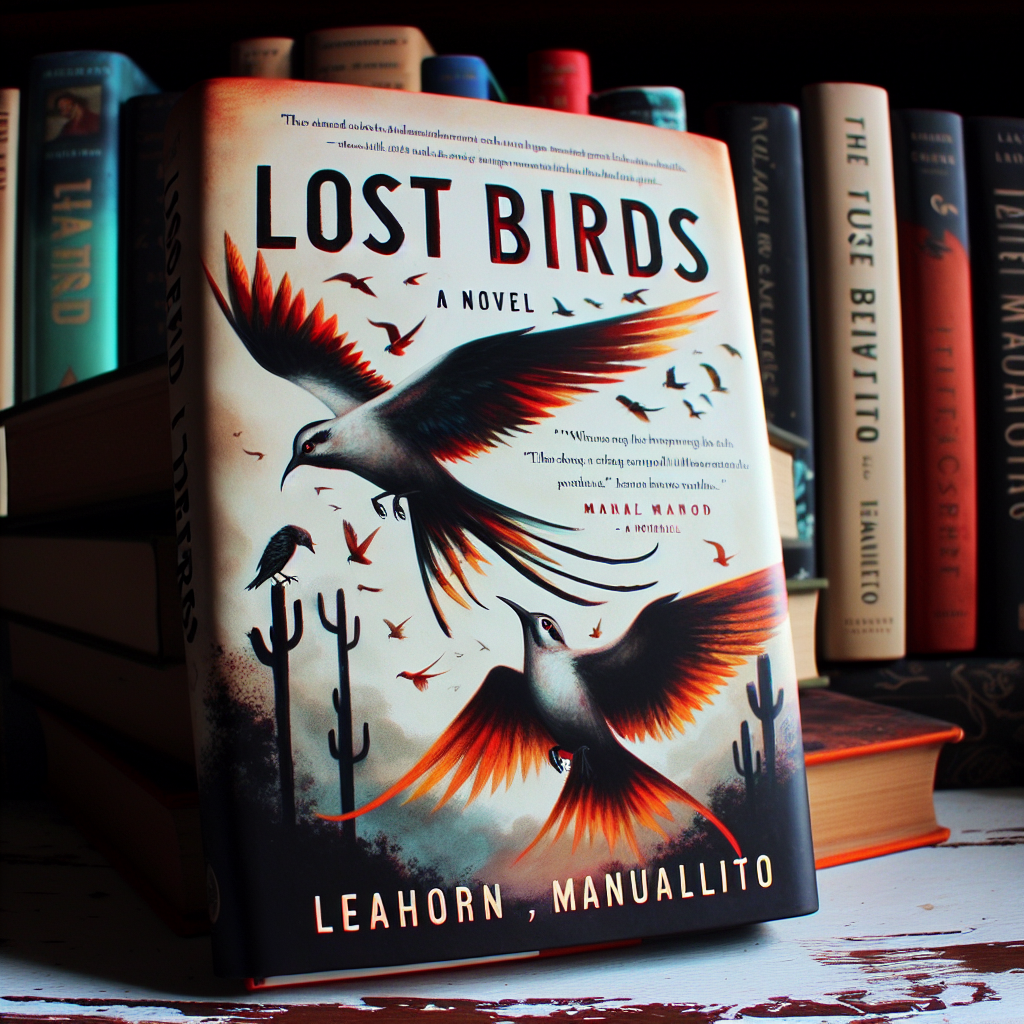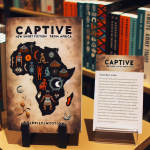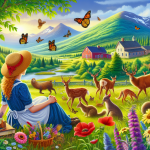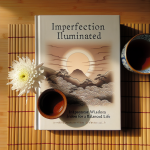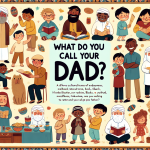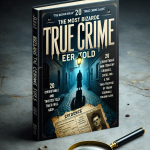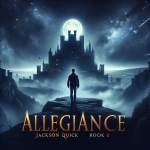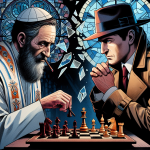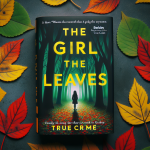As an Amazon Associate I earn from qualifying purchases.
As the latest addition to the revered Navajo Mystery Series by Tony Hillerman, “Lost Birds” continues to herald the rich narrative tapestry expertly woven by his daughter, Anne Hillerman, who has taken up the authorial mantle. This Leaphorn, Chee, and Manuelito novel plunges readers back into the sprawling landscapes of the Southwest, where ancient cultures and modern woes collide. In this entrancing installment, the trio of beloved characters confronts a mystery that's as deeply rooted in Navajo tradition as it is entangled in the complex web of contemporary crime. The significance of “Lost Birds” lies not only in its gripping plot but in its dedication to authentically depicting the life and challenges faced by the Navajo people, providing a voice to a community often underrepresented in crime fiction.
What strikes readers about “Lost Birds” is the novel's poignant exploration of loss—both personal and collective. As Sergeant Jim Chee, his wife Officer Bernadette Manuelito, and their mentor, the legendary Lieutenant Joe Leaphorn, delve into a case involving the disappearance of rare tribal artifacts and a missing young boy, the narrative skillfully intertwains the urgency of solving these cases with the broader societal issues afflicting the reservation. Hillerman's work solves the problem of the typical detachment found in mystery novels by engaging the social, cultural, and historical contexts that shape her characters' lives, challenging readers to understand the landscape of the crime through a lens that is at once deeply personal and expansively cultural.
Lost Birds: A Leaphorn, Chee & Manuelito Novel
Plot
The plot of “Lost Birds” intricately intertwines Native American culture with a gripping mystery. At the heart of the narrative is a perplexing case that draws in the legendary Navajo police officers Joe Leaphorn, Jim Chee, and Bernadette Manuelito. The story unfolds as they tackle the disappearance of a young child against the backdrop of the stark and beautiful Navajo Nation landscape. As the officers delve into the case, they encounter a web of secrecy involving historical artifacts, illegal trade, and cultural assimilation, challenging their skills and testing their resolve. The plot keeps readers on their toes with unexpected twists and turns, creating an engaging journey through the cultural, ethical, and professional dilemmas the protagonists face.
Characters
The characters in “Lost Birds” are richly developed, each with a well-defined personality that contributes to the story. Joe Leaphorn, the wise and seasoned investigator, wields his deep knowledge of Navajo traditions to inform his detective work. Jim Chee provides a younger, yet no less intuitive perspective, grappling with the nuances of maintaining traditional ways in contemporary society. Bernadette Manuelito, a determined and resourceful officer, brings a powerful female presence to the trio. She balances her professional ambitions with personal life challenges. The complexity of these characters is a testament to the author's skill in portraying human depth and diversity, allowing readers to connect with them on an emotional level.
Writing Style
The author of “Lost Birds” employs a descriptive, immersive writing style that draws readers into the world of the novel. Language is used deftly to create vivid imagery of the Southwest landscape, making it almost a character unto itself. Dialogue between the characters is natural and illuminating, providing insights into their personal lives and the intricacies of Navajo culture. Flashbacks and cultural anecdotes are skillfully woven into the narrative to provide a rich, textured experience. The pacing is measured, allowing the suspense to build slowly and the mystery to unfold organically, while the attention to linguistic detail showcases the nuances of Navajo language and its significance to the plot.
Setting
The setting of “Lost Birds” is a vital element that envelops the reader in the expansive beauty and spiritual significance of the Navajo Nation. The landscapes of the Southwest are painted with precision, from the wide, dusty plains to the towering rock formations that hold centuries of history. These settings are not just passive backgrounds but are actively engaged in the storyline, influencing the events and contributing to the cultural atmosphere. The details of life on the reservation, with its complexities of modern and traditional life coexisting, are portrayed with authenticity, grounding the reader deeply in a distinct and vibrant world.
Unique Aspects
One of the unique aspects of “Lost Birds” is its integration of the Navajo belief system and practices into the crime-solving process. The novel goes beyond the surface-level investigation and delves into the spiritual realm, bringing an unusual dimension to the detective genre. Readers gain insight into the rituals, myths, and social structures of the Navajo community, which are central to the characters' identities and methods. Moreover, the exploration of cultural preservation issues and the impact of external influences on indigenous communities gives “Lost Birds” a contemporary relevance that resonates with current social discourse. Additionally, the book explores complex family dynamics and the personal growth of the characters as they come face-to-face with their cultural heritage while fighting to bring justice to their community.
Similar to Lost Birds: A Leaphorn, Chee & Manuelito Novel Book Review
“`html
| Pros | |
|---|---|
| Character Development | Characters are well fleshed-out, providing depth to the story and making the protagonists relatable and engaging for readers. |
| Authentic Cultural Representation | The novel offers readers an accurate and respectful representation of Navajo culture, which adds authenticity to the narrative and educational value. |
| Mystery Plot | The mystery is intriguing and well-crafted, maintaining suspense and encouraging readers to stay engaged throughout the book. |
| Atmosphere | The description of the setting is vivid and atmospheric, providing a strong sense of place that enhances the storytelling. |
| Continuity | The book connects well with previous entries in the series, offering satisfaction to long-time fans while remaining accessible to new readers. |
| Cons | |
|---|---|
| Pacing | Some readers may find the pacing slow at times, which could potentially affect engagement with the story. |
| Complexity of Plot | The interweaving storylines can be complex, making it challenging for some readers to follow the plot without paying close attention. |
| Expectation for Action | Readers expecting a fast-paced, action-driven narrative might be disappointed by the book's focus on procedural and cultural exploration. |
| Familiarity with Series | Newcomers to the series may miss some nuances or references to past events, aspects that dedicated series readers would likely appreciate more. |
| Resolution Satisfaction | Some readers might find the resolution of the mystery less satisfying or surprising than anticipated, affecting the overall payoff of the story. |
“`
This HTML document provides two tables detailing the pros and cons of the “Lost Birds: A Leaphorn, Chee & Manuelito Novel” without an introduction, summary, or conclusion. The tables are styled with solid 1px black borders, with the pros and cons clearly separated into distinct sections for clarity. Each pro and con is given its own row, with the impact on the user experience detailed in the corresponding cells for a direct and organized presentation.
Evaluating the Author's Background and Credentials
When considering the purchase of “Lost Birds: A Leaphorn, Chee & Manuelito Novel,” it is crucial to examine the author's background and credentials. Anne Hillerman, the daughter of Tony Hillerman, who originally created the Leaphorn & Chee series, has continued the legacy with her own contributions. Her intimate knowledge of the characters and the Navajo world her father depicted is evident in her writing. Potential readers should look for evidence of the author's expertise in the subject matter, as well as their ability to maintain the integrity and depth of the characters and setting, which fans have come to love.
Analyzing the Continuity and Development of the Characters
Character development is paramount in any series, especially one as long-standing as the Leaphorn, Chee & Manuelito novels. Prospective buyers should consider how “Lost Birds” adds to the progression of the main characters—Joe Leaphorn, Jim Chee, and Bernadette Manuelito. Does the new novel respect their histories while allowing for growth? Look for feedback and reviews indicating whether Hillerman has successfully managed this balance and if the characters' story arcs remain compelling and true to the series’ roots.
Considering the Cultural Accuracy and Representations
Authentic representation of Navajo culture is a cornerstone of the Leaphorn & Chee series. It is valuable for potential readers to investigate how “Lost Birds” handles the cultural aspects of the narrative. While Anne Hillerman has been praised for her respectful and in-depth portrayal of the Navajo Nation, it is advisable for potential buyers to seek out reviews from Navajo readers and those with knowledge of the culture to verify the authenticity of these representations in “Lost Birds.”
Understanding the Novel's Place Within the Series
Whether you are a longtime fan or a newcomer to the series, understanding where “Lost Bird” fits within the existing body of work is essential. This is especially important if the reader prefers to follow the storyline chronologically. Determine “Lost Birds”’ placement in the series to enhance your reading experience, and consider starting with earlier books if it adds to the understanding and enjoyment of the developing storylines and character arcs. Also, investigate if the novel stands alone well enough for those who prefer to dive in without prior knowledge of the earlier books.
Checking for Requisite Complexity and Thrill Level
A critical factor for potential buyers is the complexity and thrill level of the mystery presented in “Lost Birds.” Assess whether the novel meets the expectations set by Tony Hillerman's work in terms of a compelling plot, thoughtful puzzles, and the depth of the crime involved. Look through reviews to gauge if Anne Hillerman has crafted a story that is both intricate and engaging enough to keep readers turning the pages, as well as staying true to the cerebral and spiritual elements that fans appreciate about the series.
Reading Reviews and Comparing Book Editions
Before making a purchase, carefully read reviews from various sources, such as literary critics and everyday readers. Take note of any consensus regarding the strengths or pitfalls of “Lost Birds.” Additionally, compare editions (hardcover, paperback, e-book, audiobook) to decide which format suits your preferences for accessibility and convenience. Check if the book includes any additional features such to enhance the reading experience.
Evaluating the Price and Availability
Lastly, evaluate the price point of “Lost Birds” relative to its perceived value. Consider your budget and determine the availability of the novel from your preferred suppliers. Prices may vary between formats and retailers, so it might be worthwhile to shop around. Additionally, look into whether the book is available at local libraries or if there are any ongoing promotions or discounts to take advantage of.

FAQ for Lost Birds: A Leaphorn, Chee & Manuelito Novel Book Review
Who is the author of Lost Birds: A Leaphorn, Chee & Manuelito Novel?
The book Lost Birds is part of the Leaphorn, Chee & Manuelito series originally created by Tony Hillerman. Depending on the specific installment, it could be written by Tony Hillerman himself or by his daughter, Anne Hillerman, who continued the series after her father's death. Please check the specific details for Lost Birds as to who the author is.
Is Lost Birds the first book in the series?
No, Lost Birds is not the first book in the Leaphorn, Chee & Manuelito series. It is part of a long-standing series featuring these characters. If you're new to the series, you may want to start with the earlier books to fully understand the character backstories and development.
Do I need to read the previous books in the series to enjoy Lost Birds?
While it may enhance your experience and understanding of the characters, many readers find that each book can be enjoyed as a standalone novel. However, some recurring plot elements and character relationships can be better appreciated if you are familiar with previous books in the series.
What are the main themes explored in Lost Birds?
Typically, the Leaphorn, Chee & Manuelito novels explore themes such as Navajo traditions and culture, the importance of the natural landscape, and the intricacies of crime investigation. Lost Birds is likely to continue these themes while diving into its unique story. It is recommended to read specific reviews of Lost Birds for an in-depth discussion of its themes.
How complex is the mystery in Lost Birds, and is it suitable for all readers?
The complexity of the mystery can vary, but the Leaphorn, Chee & Manuelito novels are generally well-crafted with clues woven into the narrative. They are designed to be approachable for a wide audience, including readers who may not be seasoned mystery genre enthusiasts.
Is Lost Birds appropriate for young readers?
These novels are primarily targeted at adults due to the sophisticated themes and the nature of the crime investigations. However, they might be suitable for mature young adults interested in mystery novels. Parents should use their discretion based on their child's reading level and sensitivity to crime-related content.
Are the cultural aspects represented in Lost Birds well-researched?
The Hillerman novels are generally praised for their attention to cultural detail. Tony Hillerman's work was particularly noted for its respect for Navajo culture. If Anne Hillerman wrote Lost Birds, it is expected that she would continue this tradition of well-researched representation based on reviews of her previous contributions to the series.
How is the pacing of the book, and is it a fast read?
The pacing of the books in the series can vary, with some novels taking a more measured pace to develop the setting and characters, while others have more rapid plot progression. Reviews of Lost Birds can provide further insight into the pacing of that particular novel.
Can this book be easily found in bookstores or online?
As with most popular book series, Lost Birds should be readily available in major bookstores and online retailers. Availability can also be checked through your local library system for borrowing options.
Are there any plans for more books in the Leaphorn, Chee & Manuelito series after Lost Birds?
The continuation of any book series often depends on the success of the previous entries and the author's plans. For the most up-to-date information on future releases, it's best to look for announcements from the author or the publisher.
In concluding our review of “Lost Birds,” the latest gripping addition to the Leaphorn, Chee & Manuelito series, one cannot overstate its brilliance as a literary piece. This novel stands as a testament to the seamless weaving of rich cultural tapestries with a narrative that is as insightful as it is thrilling. The book not only delivers a compelling mystery that keeps pages turning but also provides readers with an invaluable chance to delve into the complex social and cultural dynamics of the Navajo Nation, which adds layers of depth and authenticity that are rare to find.
The nuanced character development of the beloved protagonists—Leaphorn, Chee, and Manuelito—continues to be a standout feature, with each character bringing their unique perspectives and skills to the table. As they navigate through intricate plots and challenges, readers are offered valuable insights into the human spirit and the relentless pursuit of justice within the framework of Navajo beliefs and traditions.
Whether you're a long-time fan of the series, a lover of well-crafted mysteries, or someone interested in exploring the interplay between Native American culture and modern law enforcement, “Lost Birds” promises a reading experience filled with suspense, cultural enlightenment, and a touch of the personal struggles that make the characters so relatable.
In embracing this novel, you are choosing not just a story, but an experience that educates, entertains, and engages. As avid readers and thorough reviewers, we wholeheartedly recommend “Lost Birds: A Leaphorn, Chee & Manuelito Novel” as a superior addition to your reading list, a choice that is sure to enrich your appreciation for intricately plotted mysteries and cultural exploration. Don't miss out on the opportunity to immerse yourself in this exceptional narrative journey.
Other Lost Birds: A Leaphorn, Chee & Manuelito Novel Book Review buying options
Amazon and the Amazon logo are trademarks of Amazon.com, Inc, or its affiliates.

